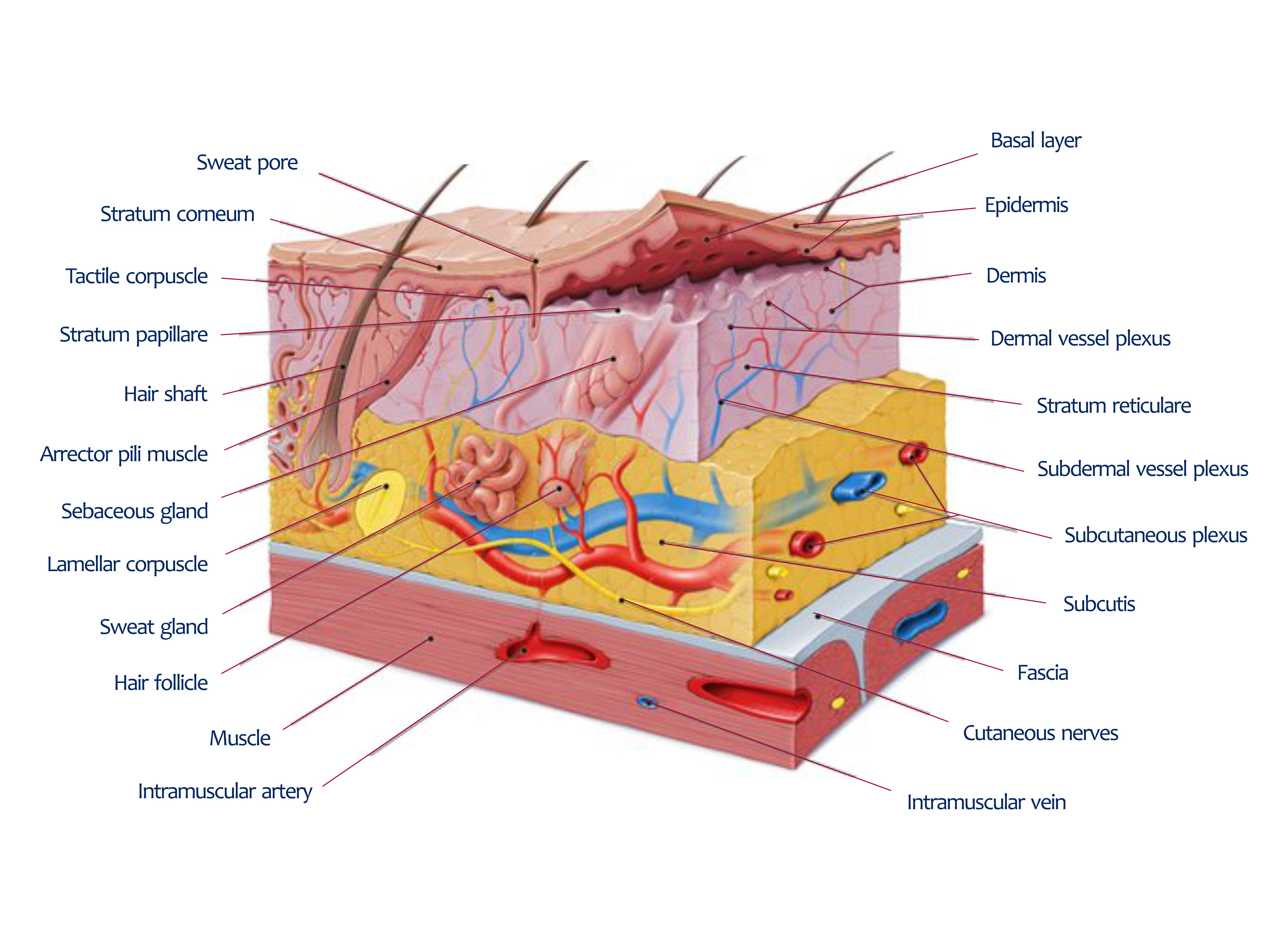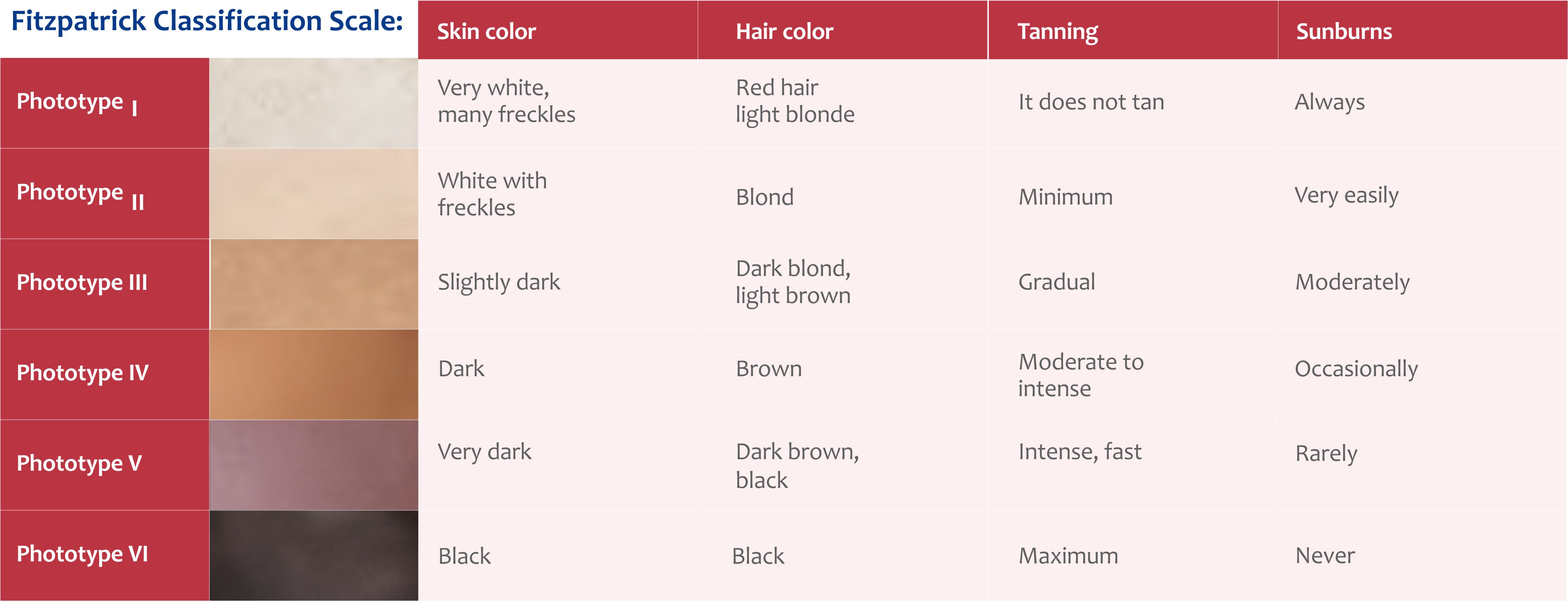

The human skin is the outer covering of the body and it is the largest organ of the integumentary system. The skin has seven layers of ectodermal tissue and guards the underlying muscles, bones, ligaments, and internal organs. The adjective cutaneous literally means of the skin (from Latin cutis, skin)
What is the function of the skin?
The primary function of the skin is to act as a barrier. The skin provides protection from mechanical impacts and pressure, variations in temperature, micro-organisms, radiation, and chemicals.
What is your skin made of?
Skin is made up of three layers. The outermost is the epidermis. The consists mainly of cells called keratinocytes, made from the tough protein keratin (also material in hair and nails). Keratinocytes form several layers that constantly grow outwards as the exterior cells die and flake off.
What foods are good for the skin?
1- Fatty fish
2- Avocados
3- Walnuts
4- Sunflower seeds
5- Sweet potatoes
6- Red or yellow bell peppers
7- Broccoli
8- Tomatoes
9- Soy
10- Dark chocolates
11- Green tea
How to identify your skin type?
To determine your skin type, start by washing your face and then waiting an hour. After it’s been an hour, dab your forehead and nose with a tissue and check to see if any oil rubbed off. If it did, It’s a sign that you have oily skin. If there isn’t any oil but your face feels dry and tight, you may have dry skin.
What are the characteristics of healthy skin?
Healthy skin is smooth, with no breaks in the surface. It is warm (not hot or red) and neither dry and flaky nor moist and wrinkled. Healthy skin is a mirror of a healthy body.
How long take skin to grow?
Throughout your life, your skin will change constantly, for better or worse. In fact, your skin will regenerate itself, approximately every 27 days. Proper skin care is essential to maintain the health of this protective organ.
What types of cells are In the epidermis?
1- Keratinocytes (skin cells).
2- Melanocytes (pigment-producing cells).
3- Langerhans cells (immune cells).
1- Cleanse your face twice a day
2- Get plenty of good sleep
3- Choose your environments wisely
4- Increase the consumption of antioxidants
5- Exfoliate your face gently
6- Exercise regularly
7- Use a daily moisturizer
8- Drink plenty of water
9- Wear an SPF
10- Read ingredients listings

What is the largest human organ?
The human body’s largest organ is the skin, and along with hair, glands, and nerves, is part of the integumentary system. This system acts as a protective barrier between the outside and the inside of the body.
How does skin grow?
New skin cells are generated on the inner side of the skin as old cells on the outside die and shed. In this way, your skin is constantly growing itself from the inside. Contained within the layers of the skin cells are networks of blood vessels that nourish the skin cells, the structure that grows like hair.
What layers of skin is white?
The subcutaneous tissue (from Latin subcutaneous, meaning beneath the skin) also called the hypodermis, (hypoderm from Greek, meaning beneath the skin) subcutis or superficial fascia are the lowermost layers of the integumentary system in vertebrates.
Does skin grow back when it peels?
Skin grows back in about 10 to 14 days after the peel. The skin stays very red for the weeks, and up to 2 months for some people. Most people take about 2 weeks off from work. Complete healing of the skin may take several months.
How does skin heal itself?
Once the invading micro-organisms have been brought under control, the skin proceeds to heal itself. The ability of the skin to heal even after considerable damage occurs due to the presence of stem cells in the dermis and cells in the stratum basal of the epidermis, all of which can generate new tissue.
Does peeling remove tan?
Yes, you will lose the tan if your skin peels, but it’s generally painful and takes a bit of time for skin renewal. Keep on moisturizing your skin since it gets really tough. Don’t peel forcefully to accelerate the process.
It is necessary to consider: the general physical appearance, the phototype (I-VI) according to the classification of Fitzpatricks (figure), the degree of photo-aging, to choose the type of peeling and agent to be used, according to the level of depth that is to be achieved, the density and the state of activity of the sebaceous glands, the degree of skin laxity of the orbital regions, the presence of hypertrophic and/or keloid scars on the entire cutaneous area, the presence of infections in the areas to be subjected to peel, other dermatopathy. Naturally, the experience, competence, and sensitivity of the doctor are indispensable conditions for the success of the therapy. Low photo types have less risk of suffering from post-inflammatory hyperpigmentation.
